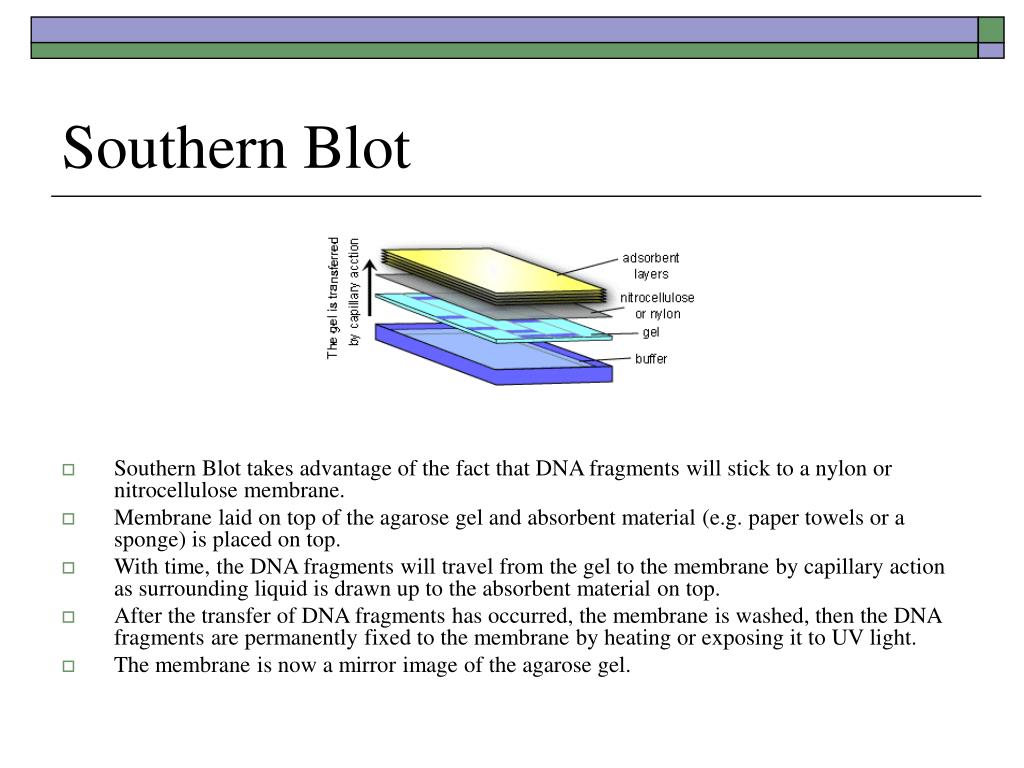

Either it can be done by autoradiography on an X-ray film.Two types of patterns are used for the detection of hybridization The unbound prob is washed away from the membrane in 2x SSC buffer and 0.1% SDS. Then, this blot is incubated with a specific probe. Now, the transferred DNA is attached to the membrane by high temperature or UV light. Here instead of agarose gel polyacrylamide is used due to its high melting point.

In electro-blotting, electric current is used for the transferring of DNA onto membrane. This process takes about 2 hours and hence is a faster process. In vacuum blotting, vacuum is used for the transferring of DNA onto the membrane instead of capillary forces. Two methods are used for transferring DNA to membrane, namely Then, this DNA is loaded and run through an agarose gel such that in well 1 DNA marker is added, in lane 2 restricted DNA is added and in well 3 unrestricted (i.e. DNA is extracted with enzyme and a large piece of DNA is chopped into smaller pieces using R.E. First of all, DNA is extracted from the cells and purified. The key to this method is hybridization, which is a process of forming double stranded DNA molecule between a single stranded DNA probe and a single stranded target patient DNA.īeffers/ chemicals and equipments required: The restricted DNA might be a plasmid or bacteriophage clone. Southern blotting is a technique in which transfer of DNA molecule, usually restriction fragments, from an electrophoresis gel to a nitrocellulose or nylon sheet is done in such a way that DNA banding pattern present in the gel is reproduced on the membrane. This technique was named after it inventor and developer, the British biologist, Edward M. Southern Blotting- introduction, steps, applications, limitations and disadvantages: Southern blotting is a technique which allows the the detection of a specific DNA sequence in a large complex sample of DNA.


 0 kommentar(er)
0 kommentar(er)
